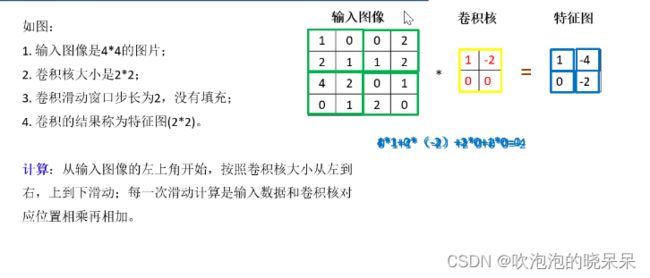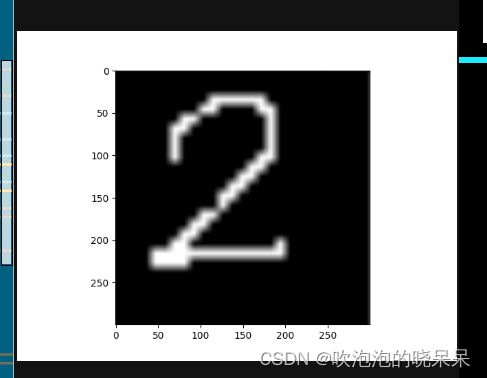卷积神经网络笔记
在这个过程中注意降维
全连接的手写数字书别:
(1)构建数据集:
import struct
import os
import numpy as np
import gzip
#import cv2
def load_images(filename):
"""load images
filename: the name of the file containing data
return -- a matrix containing images as row vectors
"""
g_file = gzip.GzipFile(filename)
data = g_file.read()
magic, num, rows, columns = struct.unpack('>iiii', data[:16])
dimension = rows*columns
X = np.zeros((num,rows,columns), dtype='uint8')
offset = 16
for i in range(num):
a = np.frombuffer(data, dtype=np.uint8, count=dimension, offset=offset)
X[i] = a.reshape((rows, columns))
# X[i] = cv2.resize(a.reshape((rows, columns)), (32, 32), interpolation=cv2.INTER_AREA) # @@resize为32*32
offset += dimension
return X
def load_labels(filename):
"""load labels
filename: the name of the file containing data
return -- a row vector containing labels
"""
g_file = gzip.GzipFile(filename)
data = g_file.read()
magic, num = struct.unpack('>ii', data[:8])
d = np.frombuffer(data,dtype=np.uint8, count=num, offset=8)
return d
def load_data(foldername):
"""加载MINST数据集
foldername: the name of the folder containing datasets
return -- train_X, train_y, test_X, test_y
train_X: 训练数据集
train_y: 训练数据集对应的标签
test_X: 测试数据集
test_y: 测试数据集对应的标签
"""
# filenames of datasets
train_X_name = "train-images-idx3-ubyte.gz"
train_y_name = "train-labels-idx1-ubyte.gz"
test_X_name = "t10k-images-idx3-ubyte.gz"
test_y_name = "t10k-labels-idx1-ubyte.gz"
train_X = load_images(os.path.join(foldername, train_X_name))
train_y = load_labels(os.path.join(foldername,train_y_name))
test_X = load_images(os.path.join(foldername, test_X_name))
test_y = load_labels(os.path.join(foldername, test_y_name))
return train_X, train_y, test_X, test_y
class DatasetTrans():
"""" 训练数据转换 """
def __init__(self, X, y, batch_size):
"""
param:
x,y: 从文件读上来的数据
batch_size: 要划分的batch大小
"""
self.x = X
self.y = y
self.batch_size = batch_size
self.total = self.x.shape[0]
self.nbatch = int(self.total/batch_size)
def get_batch(self, n):
"""" 获取一个batch的数据
param:n第几个batch
return: inputs2一个batch的数据、label2对应的标签
"""
start = n * self.batch_size
end = (1+n)* self.batch_size
if end >= self.total:
inputs = self.x[start: ]
label = self.y[start: ]
else:
inputs = self.x[start: end]
label = self.y[start: end]
# 转换为(N, 784); (N, 10)
shape = inputs.shape
#inputs2 = np.zeros((shape[0], shape[1]*shape[2]))
#for i in range(inputs.shape[0]):
# inputs2[i] = inputs[i].flatten()
label2 = np.zeros((label.shape[0], 10))
for i in range(label.shape[0]):
v = label[i]
label2[i][v] = 1
return inputs, label2
if __name__ == "__main__":
train_X, train_y, test_X, test_y = load_data("./data/MNIST")
print("===: ", train_X.shape, train_y.shape, test_X.shape, test_y.shape)
import cv2
dir_name = "../MNIST/train/"
for i in range(train_X.shape[0]):
if not os.path.exists(dir_name):
os.makedirs(dir_name)
cv2.imwrite("../MNIST/train/{}_{}.jpg".format(i, train_y[i]), train_X[i])
dir_name = "../MNIST/test/"
for i in range(test_X.shape[0]):
if not os.path.exists(dir_name):
os.makedirs(dir_name)
cv2.imwrite("../MNIST/test/{}_{}.jpg".format(i, test_y[i]), test_X[i])
模型文件,构建模型:
# -*- coding: utf-8 -*-
from __future__ import absolute_import
from __future__ import division
from __future__ import print_function
"""
Created on Mon Fri 17 10:58:36 2021
@author: iflysse
"""
from tensorflow.keras.models import Model
from tensorflow.keras.layers import Input//构建输入层
from tensorflow.keras.layers import Dense//构建全连接层
from tensorflow.keras.layers import Flatten//降为操作
from tensorflow.keras.layers import Conv2D//对他进行计算变形,降维,传参
from tensorflow.keras.layers import MaxPooling2D//最大池化
#构建卷积神经网络
def LeNet(input_shape=(28, 28, 1), classes=10):#传入图片的大小,通道
#输入
input = Input(shape=input_shape)#输入我们的的所需要的值
#C1层
x=Conv2D(6, kernel_size=(5, 5), activation='relu')(input)//relu函数进行函数
#S2层
x=MaxPooling2D(pool_size=(2, 2))(x)//池化
#C3层
x=Conv2D(16, kernel_size=(5, 5), activation='relu')(x)//16个卷积核,卷积层
#S4层
x=MaxPooling2D(pool_size=(2, 2))(x)//池化
#C5层
x=Flatten()(x)//降维
x=Dense(120, activation='relu')(x)//全连接方法,120个神经元
#F6层
x=Dense(84, activation='relu')(x)//全连接层
#输出层
x=Dense(10, activation='softmax')(x)//10神经元,softmax是概率值
model = Model(inputs=input, outputs=x, name='LeNet')//建立模型
model.summary() # 显示模型的架构,控制台架构
return model 返回模型
if __name__ == '__main__':
LeNet(input_shape=[28, 28, 1], classes=10)//调用方法
运行结果:
Model: "LeNet"
_________________________________________________________________
Layer (type) Output Shape Param #
=================================================================
input_1 (InputLayer) [(None, 28, 28, 1)] 0
conv2d (Conv2D) (None, 24, 24, 6) 156
max_pooling2d (MaxPooling2D (None, 12, 12, 6) 0
)
conv2d_1 (Conv2D) (None, 8, 8, 16) 2416
max_pooling2d_1 (MaxPooling (None, 4, 4, 16) 0
2D)
flatten (Flatten) (None, 256) 0
dense (Dense) (None, 120) 30840 参数很多
dense_1 (Dense) (None, 84) 10164
dense_2 (Dense) (None, 10) 850 参数主机减少
=================================================================
Total params: 44,426
Trainable params: 44,426
Non-trainable params: 0
_________________________________________________________________
构建好模型后,我们对模型进行训练:
import os
from data_manager import load_data
import tensorflow.keras
from Lenet import LeNet
from tensorflow.keras.optimizers import SGD
learning_rate=0.01
# 1. 加载原始数据集
x_train, y_train, x_test, y_test = load_data("./data/MNIST")
# 输入数据为 mnist 数据集
x_train = x_train.reshape(x_train.shape[0], 28, 28, 1)
x_test = x_test.reshape(x_test.shape[0], 28, 28, 1)
x_train = x_train / 255
x_test = x_test / 255
y_train = tensorflow.keras.utils.to_categorical(y_train, 10)
y_test = tensorflow.keras.utils.to_categorical(y_test, 10)
# 调用LeNet网络模型
model = LeNet(input_shape=(28, 28, 1), classes=10)
# 编译来配置模型学习过程
sgd = SGD(lr=learning_rate, decay=1e-5, momentum=0.9, nesterov=True)
model.compile(loss=tensorflow.keras.metrics.categorical_crossentropy, optimizer=tensorflow.keras.optimizers.Adam(), metrics=['accuracy'])
model.fit(x_train, y_train, batch_size=64, epochs=30, verbose=1, validation_data=(x_test, y_test))
score = model.evaluate(x_test, y_test)
print('Test Loss:', score[0])
print('Test accuracy:', score[1])
# 保存模型
save_dir = 'weights/LeNet/'
if not os.path.exists(save_dir):
os.makedirs(save_dir)
model.save(save_dir + 'LeNet.h5')
训练结果:
Model: "LeNet"
_________________________________________________________________
Layer (type) Output Shape Param #
=================================================================
input_1 (InputLayer) [(None, 28, 28, 1)] 0
conv2d (Conv2D) (None, 24, 24, 6) 156
max_pooling2d (MaxPooling2D (None, 12, 12, 6) 0
)
conv2d_1 (Conv2D) (None, 8, 8, 16) 2416
max_pooling2d_1 (MaxPooling (None, 4, 4, 16) 0
2D)
flatten (Flatten) (None, 256) 0
dense (Dense) (None, 120) 30840
dense_1 (Dense) (None, 84) 10164
dense_2 (Dense) (None, 10) 850
=================================================================
Total params: 44,426
Trainable params: 44,426
Non-trainable params: 0
_________________________________________________________________
预测和运用,图像分类:
import os
import numpy as np
import tensorflow as tf
from Lenet import LeNet
from PIL import Image
import matplotlib.pyplot as plt
def handel_image(img_dir):
'''
将图像处理成符合本次实验的输入形式
shape:[-1,784]
1.根据图片路径显示图片
2.将图片转化成黑白图片
3.裁剪图片成28*28大小
4.将图片转化成array形式
5.将图像reshape:[-1,784]形式
:param img_dir: 图片路径
:return: array形式的图片
'''
# TODO: 1.使用Image.open打开图片image
image = Image.open(img_dir)
# TODO: 2.使用plt显示图片
plt.imshow(image)
plt.show()
# TODO: 3.使用image.convert('1')将图片转化成黑白图片
image = image.convert('1')
# TODO: 4.使用image.resize将图片裁剪成[28, 28]
image = image.resize([28, 28])
# TODO: 5.转化成np可处理格式
image = np.array(image).astype(np.float32)
#TODO:6.设置通道数为1(灰度图像)
image = image.reshape([28, 28,1])
image = np.expand_dims(image, 0)
return image
if __name__ == "__main__":
# 1. 加载模型
# 调用LeNet网络模型
model = LeNet(input_shape=(28, 28, 1), classes=10)
# 加载weights
model.load_weights('weights/LeNet/LeNet.h5')
# 2. 图像预处理
imag_data = handel_image("./data/test_image_300x300.png")
# 3. 测试
out = model(imag_data)
print("out:",out)
print("argmax(out, 1):",tf.argmax(out, 1))
cls = int(tf.argmax(out, 1))
confidence = out[0][cls]
print("类别: {}, 置信度:{}".format(cls, confidence))
预测结果:
_________________________________________________________________
Layer (type) Output Shape Param #
=================================================================
input_1 (InputLayer) [(None, 28, 28, 1)] 0
conv2d (Conv2D) (None, 24, 24, 6) 156
max_pooling2d (MaxPooling2D (None, 12, 12, 6) 0
)
conv2d_1 (Conv2D) (None, 8, 8, 16) 2416
max_pooling2d_1 (MaxPooling (None, 4, 4, 16) 0
2D)
flatten (Flatten) (None, 256) 0
dense (Dense) (None, 120) 30840
dense_1 (Dense) (None, 84) 10164
dense_2 (Dense) (None, 10) 850
=================================================================
Total params: 44,426
Trainable params: 44,426
Non-trainable params: 0
_________________________________________________________________
out: tf.Tensor(
[[4.70090377e-14 1.70552225e-10 1.00000000e+00 7.36586764e-11
4.08429611e-13 7.50180222e-17 7.19841686e-16 4.18770487e-13
4.17118759e-13 1.03071224e-16]], shape=(1, 10), dtype=float32)
argmax(out, 1): tf.Tensor([2], shape=(1,), dtype=int64)
类别: 2, 置信度:1.0
可以见得:[[4.70090377e-14 1.70552225e-10 1.00000000e+00 7.36586764e-11
4.08429611e-13 7.50180222e-17 7.19841686e-16 4.18770487e-13
4.17118759e-13 1.03071224e-16]], shape=(1, 10), dtype=float32)
argmax(out, 1): tf.Tensor([2], shape=(1,), dtype=int64)
类别: 2, 置信度:1.0




